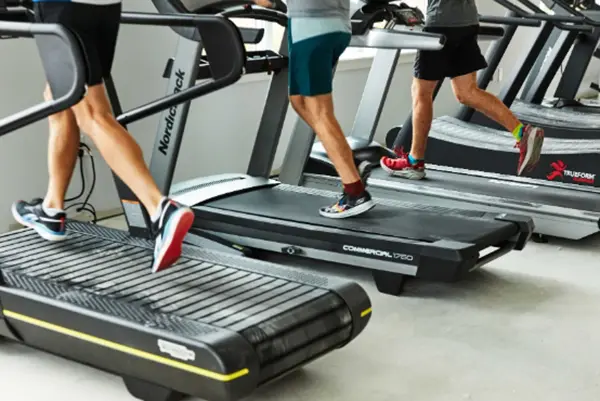Maintaining fitness equipment is crucial for ensuring its longevity, safety, and optimal performance. Neglecting upkeep can lead to breakdowns, costly repairs, and even injuries. While all gym equipment benefits from regular care, some types inherently demand more attention than others. So, which fitness equipment sits at the top of the maintenance to-do list? Unsurprisingly, the answer lies in the machines’ complexity and mechanics.
Generally speaking, cardiovascular equipment with motors and intricate moving parts tends to be the most maintenance-intensive. Within this category, treadmills and ellipticals often top the list.
Treadmills are powerhouses of motion, relying on a motor to drive the running belt. This constant friction between the belt and deck necessitates regular lubrication to prevent wear and tear, reduce noise, and ensure smooth operation. The belt itself can stretch over time, requiring adjustment or even replacement. Furthermore, the motor needs periodic cleaning to prevent overheating and failure. Sensors that monitor speed and incline can also malfunction and require calibration or replacement. Impact from users can loosen bolts and screws, necessitating regular tightening. Dust and debris accumulation under the motor cover also need attention to prevent overheating and other issues.

While often perceived as lower impact, Elliptical trainers also boast a complex array of moving parts. The interconnected arms, pedals, and resistance mechanism involve multiple pivot points requiring lubrication to prevent squeaking and stiffness. The ramp wheels, which allow the pedals to move along the track, are prone to wear and may need replacement. The resistance mechanism, whether magnetic or eddy current, can also experience issues requiring adjustment or repair. Like treadmills, the electronics controlling resistance levels and display functions are susceptible to malfunction.
Following closely behind in terms of maintenance demands are cable-based strength training machines. These machines rely on a network of cables, pulleys, and weight stacks. The cables themselves are subject to significant stress and can fray or even snap over time, requiring regular inspection and replacement. Pulleys need to be lubricated to ensure smooth cable movement and prevent wear. The weight stacks can become misaligned or the guide rods may need cleaning and lubrication to prevent sticking. Ensuring the integrity of the weight selection pin is also crucial for safety.
While not as demanding as motorized cardio equipment or complex cable machines, rowing machines also require regular attention. For water rowers, maintaining the correct water level and keeping the water clean is important to prevent algae growth and ensure proper resistance. Air rowers need their fan blades cleaned to maintain consistent resistance. The seat rollers and chain or strap mechanism on both types require regular lubrication for smooth operation.
In contrast, free weights like dumbbells, barbells, and weight plates require relatively minimal maintenance. Basic cleaning to remove chalk and sweat is generally sufficient. Weight benches may need occasional tightening of bolts and cleaning of upholstery. Plate-loaded machines, which use weight plates instead of cables, fall somewhere in the middle. While they lack the complex cable system, the pivot points on the levers and arms require lubrication.
It’s important to note that the frequency of maintenance depends heavily on the usage of the equipment. A commercial gym with high traffic will naturally require more frequent attention than a home gym used sparingly. However, regardless of usage levels, regular preventative maintenance is key. This includes tasks like:
-
Regular Cleaning: Wiping down surfaces to remove sweat and dirt.
-
Lubrication: Applying appropriate lubricant to moving parts.
-
Inspection: Checking for loose bolts, frayed cables, and other signs of wear.
-
Following Manufacturer Guidelines: Adhering to the maintenance schedule outlined in the equipment’s manual.
In conclusion, while all fitness equipment needs care, treadmills and ellipticals often require the most diligent maintenance due to their motorized components and intricate mechanical systems. Cable-based strength machines and rowing machines follow closely behind. Understanding the maintenance needs of different types of equipment is essential for maximizing their lifespan, ensuring user safety, and getting the most out of your fitness investment. By prioritizing regular upkeep, you can keep your equipment running smoothly and help everyone stay on track with their fitness goals.
Post time: 01-16-2025



